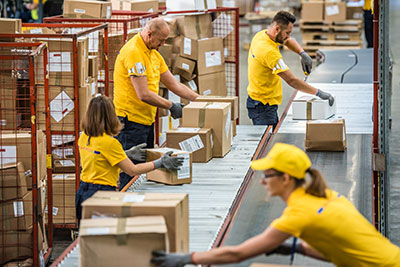A new report making headlines says that as many as 800 million workers, worldwide, will lose their jobs by 2030 as a consequence of rapid advances in automation. One envisions food lines, homelessness, rioting and government upheaval. But a closer read shows while many low-skill jobs might disappear, around the same number of desirable, higher-paying positions will be created to maintain full employment. If predictions are true, that bodes well for the fluid-power community.
The report “Jobs lost, jobs gained: Workforce transitions in a time of automation” from McKinsey Global Institute, reveals significant potential employment shifts in the years ahead. Not surprising, the news isn’t good for low-skill workers. While few occupations—less than 5%—can be fully automated, advances like self-driving trucks and robots that flip burgers may put repetitive manual labor in the crosshairs.
Less affected are professions that involve managing people, applying expertise and social interactions, where machines can’t yet match human performance. That includes engineers, technicians, IT professionals and educators. Jobs in unpredictable environments—such as mobile-hydraulic service technicians—will also generally see less automation by 2030.
The spread of technology will, in fact, spur economic growth and hiring. Rising incomes, especially in emerging economies, will push consumption of manufactured and packaged goods. Demand for new infrastructure and housing is significant.
Investments in renewable energy and energy-efficiency technologies are on the rise. And spending on new technologies like IoT could increase substantially by 2030. All that plays into the wheelhouse of fluid power’s educated and skilled workforce, and could boost employment for makers of everything from O-rings to packaging machines and hydraulic excavators.
Nonetheless, transitions due to automation could be significant. Most occupations have at least some activities that could be automated, so large numbers of people may need to find a new pursuit or learn new skills. In general, educational requirements will be higher, and that implies a college degree or specialized training. Yet over the past few decades, spending on labor-force training has fallen in most developed countries, and the educational system has not fundamentally changed in 100 years. It is now critical, said the authors, to reverse these trends, with governments making workforce transition and job creation urgent priorities.
Companies, too, must reevaluate their staffing and talent strategies. Many firms are finding it is in their self-interest, and a social responsibility, to train workers for a new world of work. And ultimately, individuals must prepare for a rapidly evolving future by gaining new expertise that is in demand.
The economic shift could be on a scale not seen since the transition of labor from agriculture to manufacturing in the early 1900s in the U.S. and, more recently in China, said the authors. Countries that fail to manage this transition could see rising unemployment, depressed wages and a lower standard of living.
Filed Under: Fluid Power World Magazine Articles, News
